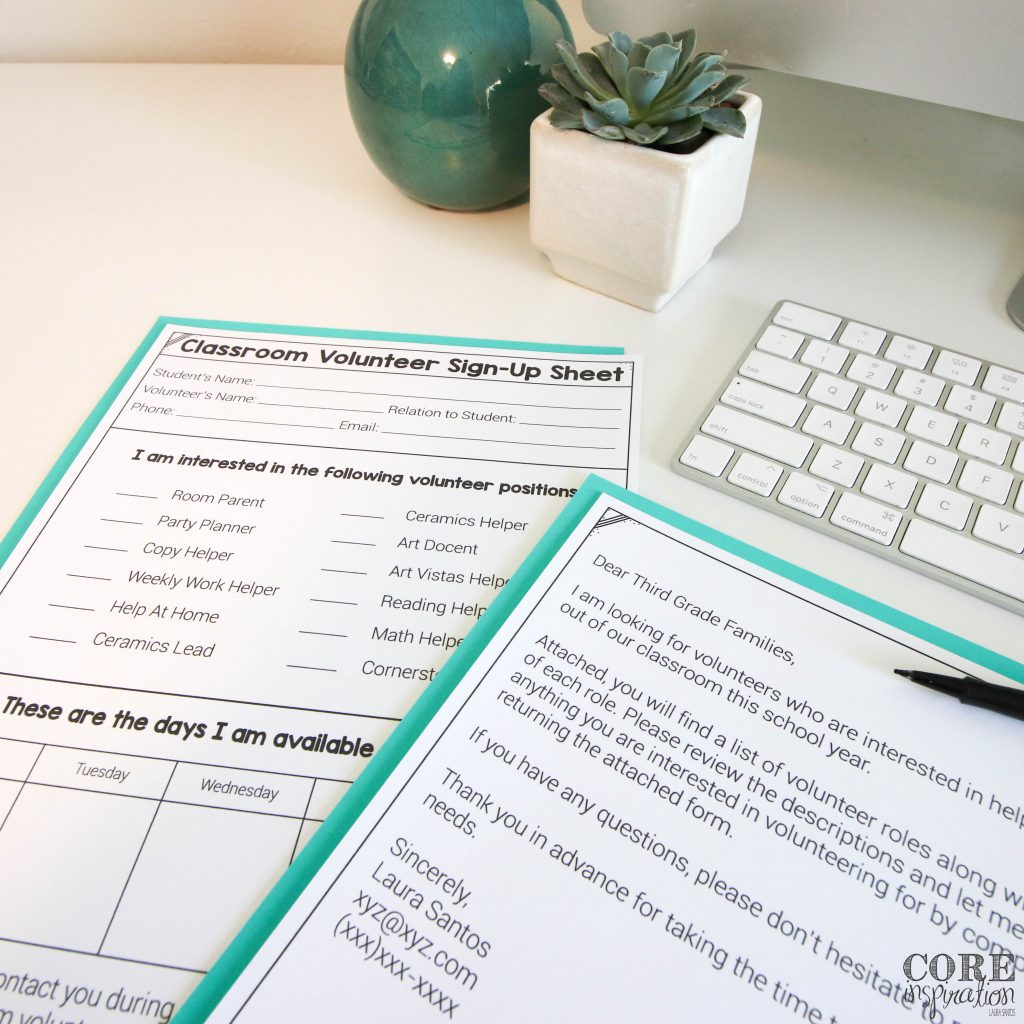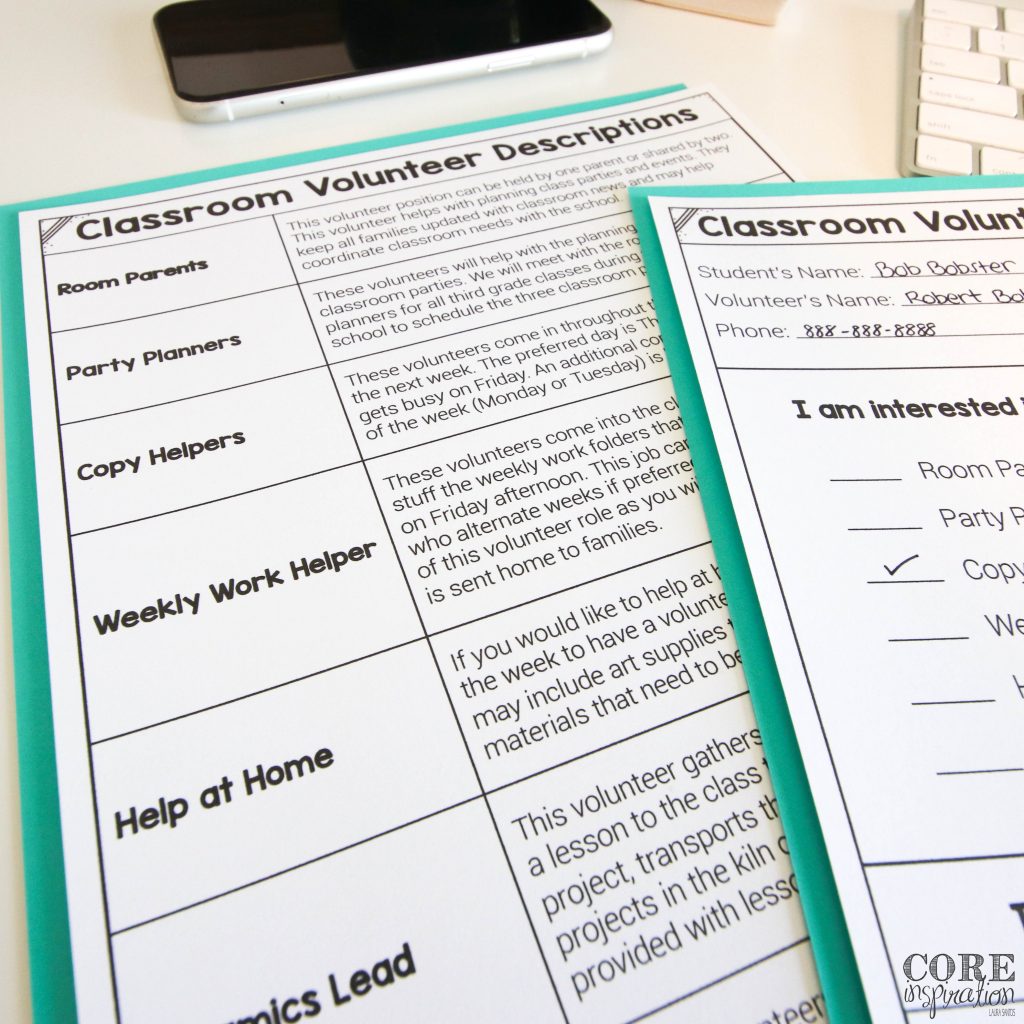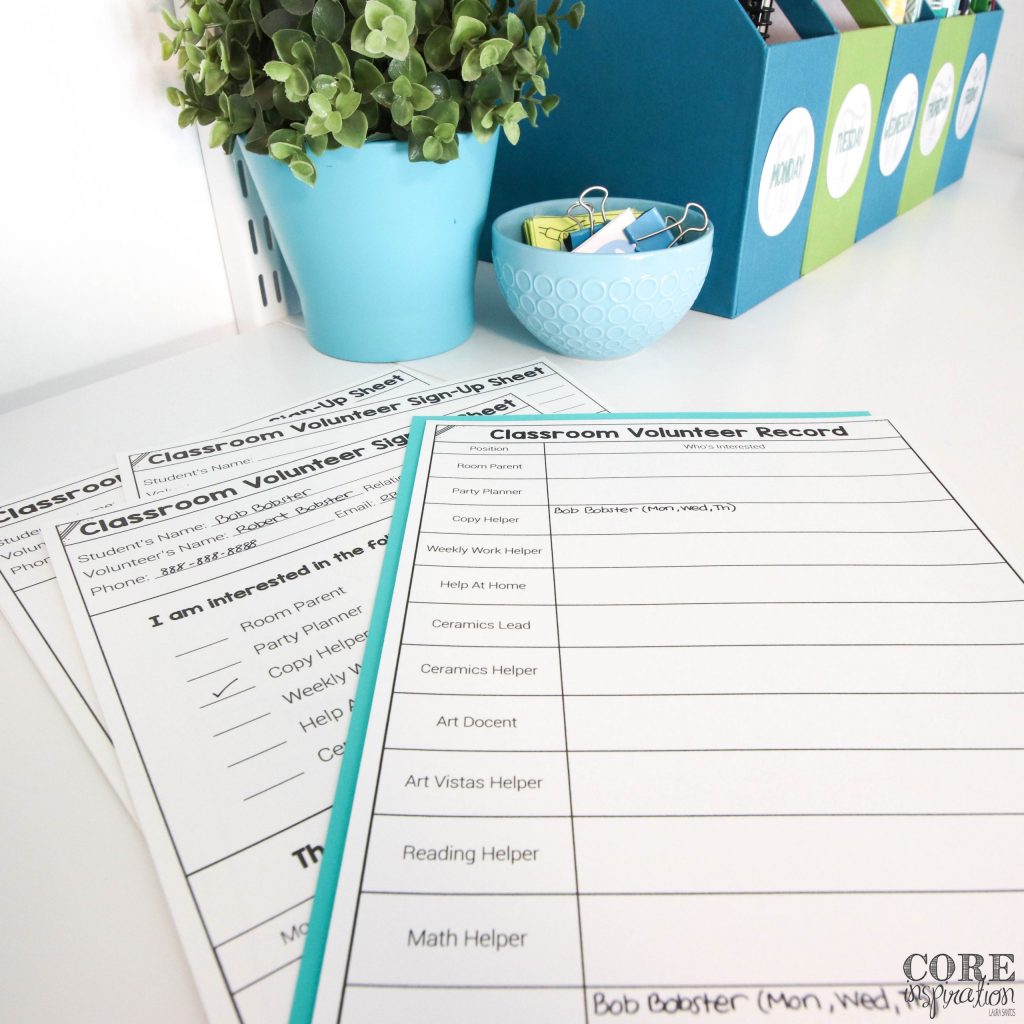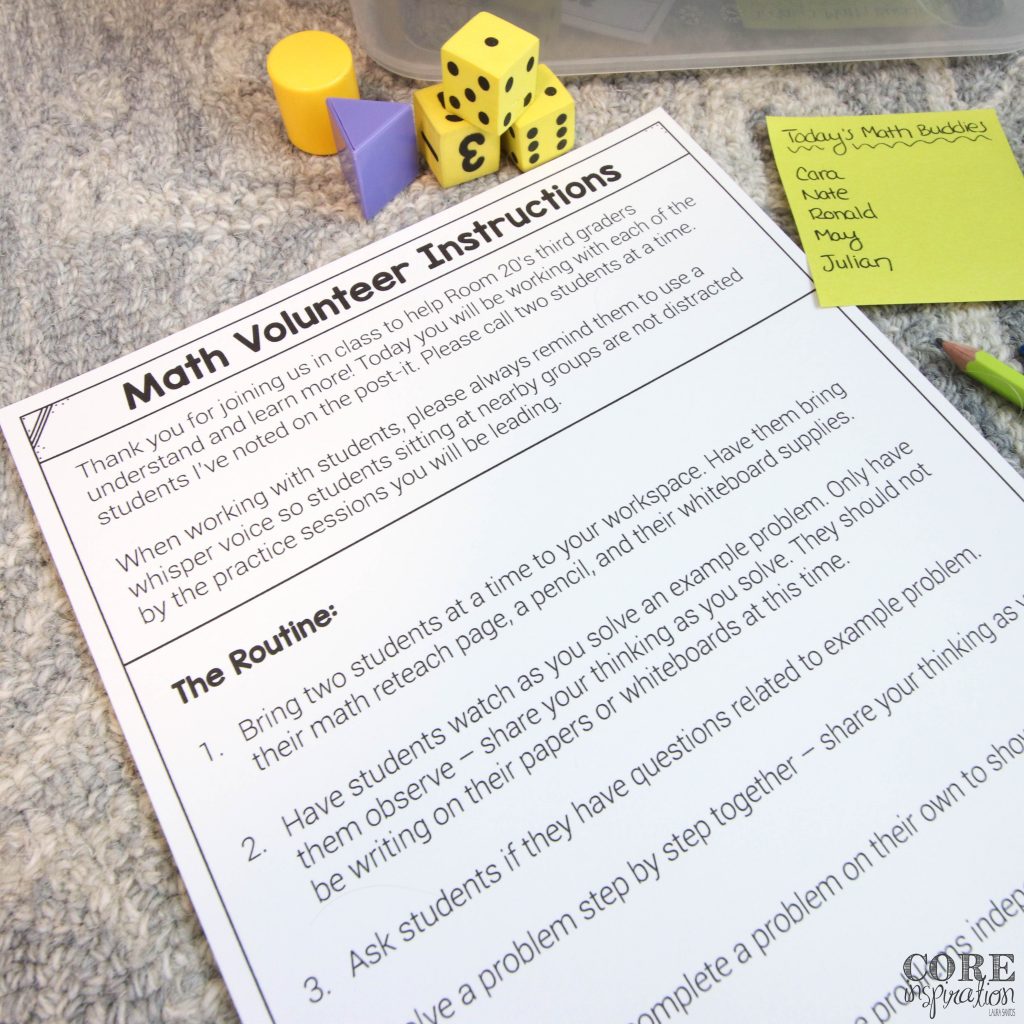Parent and family volunteers are a major asset to any classroom. Here at the start of the year, many afternoons are filled communicating with volunteers about expectations, scheduling and training. When bringing parent volunteering into the classroom, it’s important to dedicate time and effort toward creating routines and expectations for each of them so they fit right in with your respectful classroom environment and are an asset for the entire year. Taking this approach helps your volunteers become an integral part of your classroom community.
There are three vital elements in developing a strong and effective volunteer presence in your classroom: communicating needs, syncing schedules, and introducing routines and expectations.
STEP 1: COMMUNICATING NEEDS
Make a list of each area you would like support in and that you know can be successfully managed by the parents in your classroom. Once you have your inevitably long list, narrow it down to the most important areas you feel comfortable delegating to parents.
Add a brief description to each job on the list so parents and guardians get a clear sense of what’s required if they sign up for a position. When you write these descriptions, think about the adults’ perspective…they want to know exactly what will be expected of them so they can pick the job they will enjoy and feel most successful in.
Now, make a list of times you feel comfortable having parents come into the classroom. Maybe you are someone who wants volunteers to arrive during lunch and recess breaks so there is no door-opening interruptions during your lesson. I invite my volunteers to join us about 20 minutes after our recess breaks, when direct instructional lessons are complete so my students do not miss any new content when they are working with a volunteer.
Attach your descriptions and your time slots to a form parents can complete to share their interest in volunteer positions. Distribute this information to parents during the first week of school or at Back To School Night so they can make their volunteer opportunity selections in the first days of school.
STEP 2: Syncing schedules
After the work you put in to carefully communicate your needs, you will likely have a bundle of interested volunteers who each have their own interests and schedules. Yes, you have to take that pile of rumpled papers and transform them into a smooth-operating volunteer system for the entire year.
I recommend using a spreadsheet to organize the responses you receive. After you have everything laid out, you will be able to see which family members best fit in with your needs. Make an effort to assign one position to each volunteer so that everyone who is interested has their shot at contributing to the school year…this is a great way to start building those strong home-school relationships.
On the spreadsheet, begin by filling positions that require a consistent weekly schedule and then move on to filling monthly needs and finally seasonal needs.
Once you’ve quadruple-checked that no one has been left out, send each volunteer a personal email letting them know which position they have been selected for along with the days and times they are needed. When you get their confirmation, set up a training session with them.
STEP 3: INTRODUCING ROUTINES AND EXPECTATIONS
Most teachers have had that moment when they invite a volunteer into their classroom and almost immediately ask themselves…”What…have…I…done?!” I know you know what I mean.
Whether it’s a volunteer who checks their phone in front of the students, or one who uses a strong loud voice in your otherwise calm, quiet classroom, volunteers can throw of the vibe of your teaching flow and make it tricky for you and your students to focus.
You can eliminate or buffer moments like these by setting up expectations and guidelines for every volunteer that enters your class. Make it very clear to them the importance of supporting students in creating a safe, calm learning environment where they can focus and achieve their goals each day. You may find it easier to communicate your expectations by writing them down so you and your volunteers can reference them in the future.
Of course, you will want to show them where the materials they will need can be found each time they enter the room and what you want them to do to communicate problems or concerns they may have so they do not interrupt your teaching.
I hope these quick tips will help make coordinating your classroom volunteers more manageable! If you’re looking for editable tools to help you set up your own classroom volunteer system, click to take a closer look at my Editable Classroom Volunteer Toolkit.
What tips can you add to the list? Comment below with your ideas.














4 Responses
No problem Jamie, just shared them with you via Google Drive. 🙂
First of all, I love all of your blogs! I really like how you organized volunteers in the classroom. Would you be willing to share your letter and sign up sheet?
Sincerely,
Jordan
Hi Jordan, I need to check my other computer to see if I still have these saved. I have switched computers since this post and I am not sure if I can track them down. 🙂 I am currently traveling and will check as soon as I get home. Can you email me at [email protected] so I can send them your way if I locate them.
Hey, I know I’m years late to this posting party, but as a relatively new teacher (year 2), I’d love to see your volunteer description letter & sign up sheets, as well. I am moving from 1st to 3rd this coming year and LOVE how similar our classrooms run! Volunteerism is something I need major help in though. Any help, if you could would be appreciated! Hoping you see this,
Ameesha